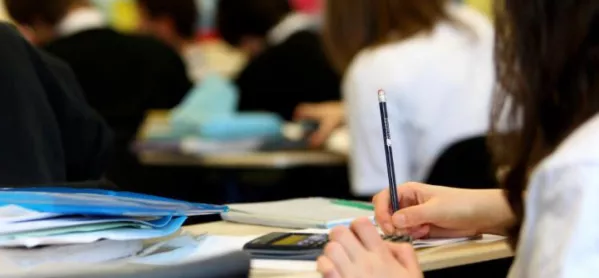- Home
- Exclusive: Most teachers ‘facing budget cuts and bigger classes’
Exclusive: Most teachers ‘facing budget cuts and bigger classes’

The majority of teachers are working in schools with falling budgets and increasing class sizes, a new poll has revealed.
A survey of a representative sample of more than 900 teachers shows that nearly three-quarters have seen their school’s funding fall in the past 12 months.
The YouGov poll also shows the majority of teachers have seen their class sizes rise.
Geoff Barton, the general secretary of the Association of School and College Leaders, told Tes that the figures demonstrate “the stark reality” of the funding pressures facing schools.
“If anyone, and particularly the chancellor, needed convincing that the impact of real-terms funding cuts are being felt in the classroom then these figures provide it,” he said.
The poll shows that 71 per cent of teachers have seen their school’s budget drop, while around 10 per cent say it has remained the same and only 3 per cent have seen an increase.
The ‘stark reality’ of school funding pressures
The figures were even higher for many parts of the state school sector, with the poll revealing that budget cuts have been seen in the past 12 months by:
- 86 per cent of teachers in pupil-referral units;
- 78 per cent of teachers in academies;
- 75 per cent of teachers in maintained schools;
- 72 per cent of teachers in free schools;
- 66 per cent of teachers in special schools;
- 60 per cent of teachers in grammar schools.
The majority of teachers also said that class sizes in their school have increased in the past 12 months
In the poll, 55 per cent of teachers had seen an increase, 40 per cent said numbers had stayed their same and just 3 per cent had seen class sizes get smaller.
Teachers working in academies (66 per cent) and grammar schools (69 per cent) were more likely to have seen an increase.
Bigger class sizes are also more likely to be an issue in secondary schools.
The results show that 63 per cent of secondary school teachers had seen an increase in class sizes, compared with 49 per cent of primary school teachers.
Earlier this year, teaching unions said class sizes were rising in the majority of secondary schools in England as a result of the “government’s underfunding of education”.
Research by the School Cuts coalition of education unions shows 62 per cent of secondary schools in England have increased the size of their classes in the past two years.
Teaching unions have been campaigning to highlight the impact of real-terms funding cuts facing schools.
The government sparked an angry reaction from the teaching profession when it announced additional capital funding, which chancellor Philip Hammond said would help pay for “little extras”.
Mr Barton said: “The figures show what happens when schools are facing budget cuts. They cut courses and increase class sizes. This means pupils are missing out and it increases workload.
“We hope that Philip Hammond was taken aback by the disbelief and derision he faced about how out of touch he was with the reality facing schools when he announced funding would be available for ‘the little extras’.
“But it reminds us of the need to talk about the pressures of school funding outside of the echo chamber of education because it is ultimately the Treasury that can make the decision to increase school funding.”
Paul Whiteman, general secretary of the NAHT, said: ” We know from our members that school leaders and their staff are being asked to do more and more with less and less, as real-terms cuts to education funding result in reduced resources and staff.
“It is unsustainable, and risks damaging the quality of education for children. The only solution is new money for schools from the Treasury.”
A DfE spokesperson said: “By 2020, there will be one million more places across the school system than there were in 2010. This is backed by the £23 billion of capital we are spending by 2021, ensuring every child has access to a good school place.
“Since 2010 we’ve raised standards in thousands of classrooms, protected school funding and made it fairer across the country, and recently boosted budgets by £508 million to give hard-working teachers a pay increase. But we also recognise budgets remain tight which is why we’re supporting schools and head teachers to make the most of every pound.”
Keep reading for just £1 per month
You've reached your limit of free articles this month. Subscribe for £1 per month for three months and get:
- Unlimited access to all Tes magazine content
- Exclusive subscriber-only stories
- Award-winning email newsletters



